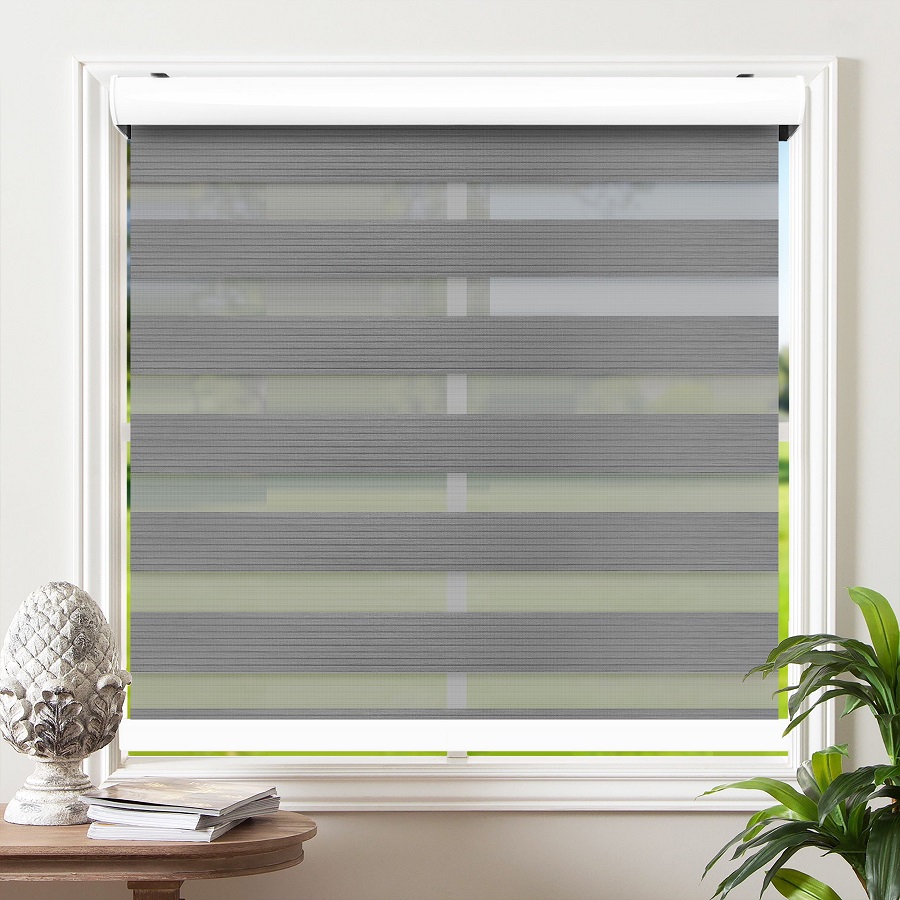Common Issues with Vertical Blinds and Solutions
How to fix vertical blinds – Vertical blinds are popular for their clean look and easy use. However, they can face issues over time. Recognizing common problems is crucial to fixing them efficiently. Here are some problems and their quick solutions.

Stuck Blinds: Blinds might refuse to move. This can result from dirt in the track. Clean the area and check for any obstructions. If the problem persists, check the tilt rod and stems.
Broken Slats: Slats can break with rough use or sun damage. Slide the damaged slat from the stem. Buy a matching slat, then click it into place.
Uneven Blinds: Misalignment causes blinds to look uneven. Gently push slats to their proper position. If that fails, check the carrier stems in the headrail.
Trouble Rotating: Difficulty in turning the blinds can occur. Look at the tilt control gear. If worn out or damaged, it needs replacement.
Detached Slats: Slats may fall off the clips. Replace old clips with new ones. Secure the slat into the correct position on the clip.
Worn Gears: A worn master gear affects rotation. Replace the gear with a new one to fix this issue.
Many of these issues have simple fixes. However, if blinds remain broken after trying these solutions, seeking professional help may be necessary. Remember to perform routine maintenance to avoid future problems with vertical blinds.
Step-by-Step Guide to Repairing Slats
Vertical blinds offer style and function but damaged slats can be a sore spot. Here’s how to fix them easily:
- Remove the Slats Carefully: Gently slide the damaged slat out from the carrier stem. Handle other slats with care to prevent further damage.
- Find a Replacement: Measure the broken slat’s size to get an exact match. Head to your nearby hardware stores or check online retailers for a new slat.
- Insert the New Slat: Once you have the replacement slat, align it with the carrier stem. Slide it in until it snaps into place.
- Test the Repair: Gently rotate and move the repaired slat to ensure it functions well with the others.
Damaged slats are not just an eyesore; they affect your blinds’ functionality. Taking time to fix them can save you from the cost of a full replacement. Remember to keep up with maintenance; it helps avoid frequent repairs.
How to Address Stuck or Unresponsive Blinds
Addressing stuck or unresponsive vertical blinds can be annoying. Yet, often the fix is simple. In many cases, the issue lies with the tilt rod or carrier stems.
First, inspect the blinds. Look for dirt or obstructions in the track. A good clean may solve the issue. If not, move to the tilt rod. Gently examine it for jams or damage.
Next, examine carrier stems for misalignment. Use needle-nose pliers if you need to reposition them. Be careful not to force or break them.
If everything seems in place but the blinds are still stuck, lubricate. Use a non-staining lubricant on the headrail and moving parts. This should ease movements and solve the problem.
Sometimes, slats may be caught, causing the blinds to stick. Check each slat to ensure they hang freely and evenly.
If the problem persists or you find broken parts, you may need replacements. Measure the parts, buy replacements, and install them carefully.
When blinds still refuse to budge, it’s time to seek professional help. Experts can diagnose and solve complex issues effectively.
Regular maintenance helps prevent such problems. Clean and lubricate your blinds often. Inspect regularly for early signs of wear or damage. Tackle small issues before they escalate into bigger ones.
Fixing Rotation Difficulties of Vertical Blinds
Facing trouble rotating your vertical blinds can be frustrating. Often, the problem lies in the tilt mechanism. This could be the tilt control rod or gear. They might be worn out or not aligned right. Here is a simple guide to fix them.
- Check the Tilt Control Rod and Gear: First, see if these parts are in good shape. Look for signs of wear or misalignment.
- Align or Replace: If the gear is damaged, get a new one. Align the tilt rod if it’s just out of place.
- Test the Blinds: After aligning or replacing, test the blinds. Make sure they rotate smoothly now.
- Lubricate: Use a proper lubricant if parts are stuck. This can help them move better.
If these steps don’t help, the problem might be bigger. Twisted slats or an unbalanced system could be the cause. Check for these issues next. Adjust slats or the weight on the blinds. If trouble continues, it’s time to call in a pro. Professionals can handle complex issues with ease.
Remember, regular maintenance is key. Keep blinds clean and well-oiled to prevent rotation problems. Address issues as soon as they appear. This keeps your blinds working well and looking good.
 Correcting Misaligned Blinds
Correcting Misaligned Blinds
Misaligned blinds disrupt the neat look and function of your window coverings. Often, misalignment results from issues with carrier stems. They may shift out of place due to wear or improper handling. Don’t worry, though; the fix may be easier than you think.
- Check the Carrier Stems: Start by examining the headrail. Look for carrier stems that are out of place.
- Adjust the Stems: Use needle-nose pliers to gently nudge misaligned stems back into line.
- Reattach the Slats: Once stems are straight, hang the slats back on them. Make sure they’re level.
- Test Their Movement: Slide the blinds back and forth to check for smooth operation.
Be patient and careful as you work on the stems to avoid damage. Simple realignment can restore your blinds to their proper function. Remember, handle them gently to keep them in line. If blinds remain uneven after this, it’s time to seek expert help. Regular checks can help catch misalignment early, preventing worse issues.
Dealing with Detached Slats
Detached slats can ruin your vertical blinds’ look and function. They often result from rough handling or worn-out clips. Thankfully, fixing detached slats is often straightforward.
- Identify the Issue: First, see which slat has come loose. Examine the clip for damage.
- Get Replacement Clips: If the clip is broken, buy new ones at a hardware store or online.
- Reattach the Slat: Line up the slat’s top hole with the clip. Press it in until it clicks.
- Check All Slats: Look over other slats to prevent future detachments. Replace any weak clips.
Reattaching slats is simple and restores your blinds. Regularly check and replace clips to avoid slats falling off. If problems continue, seek professional help for a lasting fix. Keep your blinds in top shape with routine care.
Replacing a Stripped Master Gear
Experiencing problems with blind rotation? It could be the master gear. A stripped master gear stops blinds from turning correctly. Regular use or rough handling often strips its teeth, causing issues. Luckily, it’s fixable with a replacement gear.
Here’s how to do it step by step:
- Get New Gear: Find the right replacement gear at a store or online.
- Remove Old Gear: Use a screwdriver to take out the worn gear from the headrail.
- Install the New Gear: Position the new gear in place, ensuring it fits snugly.
- Test the Blinds: Rotate them to check if the repair was successful.
Don’t stress if you’re not sure how to fix vertical blinds. These short steps can help. A new master gear can make your blinds work like new. Remember to handle blinds gently to avoid future gear issues. If you’re not confident in doing it yourself, it’s okay to ask for professional help.
When to Replace vs. Repairing Vertical Blind Components
Deciding whether to replace or repair vertical blind components is important for long-term function. If a component is slightly damaged or worn, a quick fix may restore it. However, consider replacing parts that are badly damaged or if fixes are short-term.
- Assess the Damage: Look at each component. Minor wear or damage could just need a repair.
- Consider the Age: Older blinds may need more replacements than repairs. Newer ones might need a simple fix.
- Check the Cost: Repairing can often be cheaper. But if parts are frequently breaking, investing in new ones saves money.
- Think of Longevity: Replacing key parts may extend the life of the blinds. Repairs might not last.
- Ease of Repair: Some fixes are easy to do yourself. Complex problems might need replacement.
- Availability of Parts: If you can’t find parts to repair, you might need to replace.
Making the right choice will keep your vertical blinds in the best shape. Regular maintenance can prevent frequent issues. If you’re unsure, ask a professional. They can advise on the best course of action.
 Maintenance Tips to Prevent Future Issues
Maintenance Tips to Prevent Future Issues
To avoid frequent repairs with vertical blinds, consistent maintenance is key. Here is a guide to help you keep your blinds in peak condition.
- Regular Cleaning: Dust and wipe your blinds often. Use a soft, dry cloth or a vacuum with a brush attachment. This prevents dirt build-up, which can cause issues.
- Gentle Operation: Don’t yank or pull the blinds. Always use a controlled, gentle motion when rotating or drawing the blinds open and closed.
- Inspect Regularly: Check the blinds monthly. Look for signs of wear and tear or any parts getting loose. Early detection means easier fixes.
- Lubricate Moving Parts: Once or twice a year, apply a lubricant to the headrail and other moving parts. Use a non-staining lubricant to avoid marks.
- Attend to Minor Repairs Immediately: If you spot a small issue, fix it right away. Quick fixes can prevent bigger problems later on.
- Avoid Overexposure to Sunlight: If possible, limit the time your blinds are directly exposed to the sun. This can protect slats from warping or fading.
- Treat with Care: Handle your blinds delicately. Rough use can lead to unnecessary damage.
Following these easy steps will help your blinds last longer, perform better, and look their best.
Expertise vs. DIY: Knowing When to Call a Professional
Repairing vertical blinds can often be a straightforward DIY task. But sometimes, a professional’s help is necessary. Here’s when to dial an expert:
- Complex Mechanisms. If the blind’s internal workings are beyond your knowledge, call for help.
- Serious Damage. When blinds are severely broken, an expert may need to replace parts.
- Safety Concerns. If fixing blinds could be risky, it’s wiser to hire a pro.
- Lack of Tools. Without the right tools, you might not fix the blinds properly.
- Time Constraints. If you’re busy, a professional can save you time and stress.
- Ensuring Quality. Pros can ensure the blinds function well for longer.
- Warranty Issues. Check if DIY repairs affect your blinds’ warranty. If so, use a certified technician.
When in doubt, consulting a professional is safe. They have the expertise to diagnose and solve complex issues. Plus, they can make sure your how to fix vertical blinds efforts are effective. Remember, taking care of your blinds can prevent frequent troubles. Keep them clean, handle them gently, and address minor issues promptly. Stick to maintenance tips and know when to call an expert to keep your blinds in tip-top condition.
